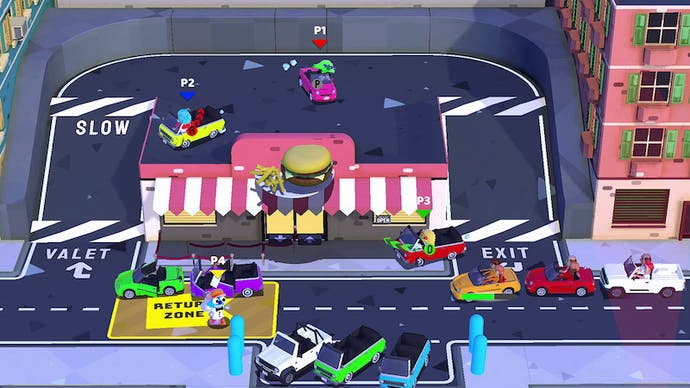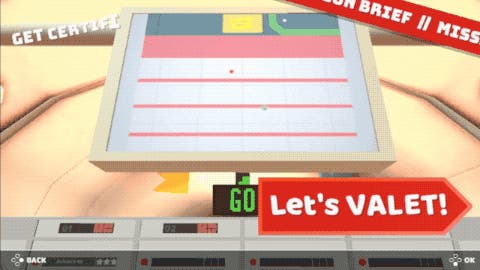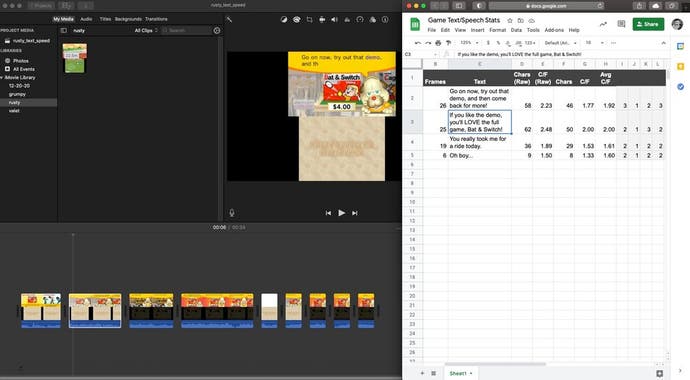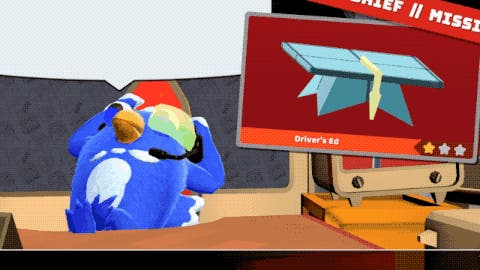The cover artists
How one dev is reverse engineering the greats to help with its own games.
You'll know the dictum, I'm sure, that says something about good artists borrowing while great ones steal, but isn't the truth simply that everyone's at it? How else to learn your craft without imitating one of the masters, learning what makes them tick and seeing if you can replicate some of that magic yourself?
That's the edict behind a lot of Toyful Games' design decisions, and you can see it manifest beautifully in the studio's debut game Very Very Valet. A cartoonish action game that tilts towards chaotic multiplayer, it's dimly reminiscent of Overcooked at first glance, but such are the details it quickly blossoms into its own. There are bits of Crazy Taxi in your mad dash from car park to customer - and Crazy Taxi is an all-time fave of the Toyful team - a touch of Halo's warthog in the esoteric, elastic and ultimately immensely enjoyable handling of the vehicles.
Perhaps the biggest surprise is that Very Very Valet is fundamentally the work of just two devs, both of whom met at Disney while working together on mobile gem Where's My Water - Tim Fitzpatrick (the talent behind early iOS delight Jellycar) and Chad Cable. What's not so much a surprise, though, is that they're both players with impeccable taste in games, as is born out in all the little touches lifted or lightly borrowed from elsewhere in Very Very Valet. It's those details that make this feel like the work of a much bigger team, and it's an incredibly polished thing in the hand.
Put some of that down to the covers the pair have done in the past, as they unlocked the secrets of what made other games tick. "The analogy is like with any craft based position, like music, you start by picking up guitar and learning your favourite songs," says Chad. "You start to see how they work, but it doesn't mean you'll become a cover band. But certainly you learned so much along the way when it comes to technique. And so we felt in games, you don't really do that, or no one really asks you to. There's all this stuff that we can learn just from really digging into specific parts of games, to see how they work, and the most elegant solutions oftentimes are the ones you don't notice."
Perhaps unsurprisingly, it's Nintendo's games that offer some of the richest pickings. Take Metroid, for example, which Chad reverse engineered to see where some of that game's timeless magic comes from. He's provided an exhaustive rundown of his process in his own blog, breaking down door animations, Samus' modelling and much more - but what, I wonder, was the biggest surprise as he poked around the parts of one of the 80s' most influential titles?

"The camera was a huge one," he says. "My assumption was that their camera was really complicated, because, you know, it's a Metroid game - it's got to be really involved. And it turns out the camera is just locked to Samus, so she's always in the centre of the frame. And that was kind of the realisation of, well, the game doesn't want to provide you editorial on where to go. So it makes a lot of sense that these cameras are dead centre, because every direction is sort of valid."
Naturally, the process has helped the way that Toyful goes about its work. "Totally, doing them has informed the way I make games," says Tim. "Before I started doing this, a lot of the effects or the sequences that I would do were slow and lumbering because it's like, oh, we really want people to understand it and see it! And then you look at any Retro Studios game, like Donkey Kong Country Returns, and you're like, wow, all their animations are 1000 times faster than mine, and they're still just as effective or probably more so yeah."
Getting more granular, there's even precise examples of how some of Nintendo's games have helped inform Very Very Valet. "I love Rusty's Real Deal Baseball," says Chad. "I don't know if you've ever played it? It's one of those games that has so much text. But they're so easy to read. And they're kind of actually a pleasure to read. So we actually looked at those to see how many lines of text we should have, what's the speed that the characters should come out at, just to see if we could crack the code of making our characters feel as charming."



The detail into which this particular feat of reverse engineering goes is impressive - but even more so is the end result when applied to Toyful's own work. It's the sort of breeziness and charm that can only come via some serious thought and hard work - and who better to turn to when it comes to seeing the gold standard for certain design decisions than Nintendo?
"When you're making games, there's all these weird scales of decision making," says Tim. "There's really big decisions like what game to make, or you know what character to have. And then there's all these tiny decisions while you're actually making each feature. Doing covers has been a great way to look at world class craftsmanship in other games and derive some of the little details like that, that you can then either kind of just take and go well that was great. So I'll use it or at least kind of spend the time thinking about why they did it that way you know and then and then start to become better at making those decisions yourself."


